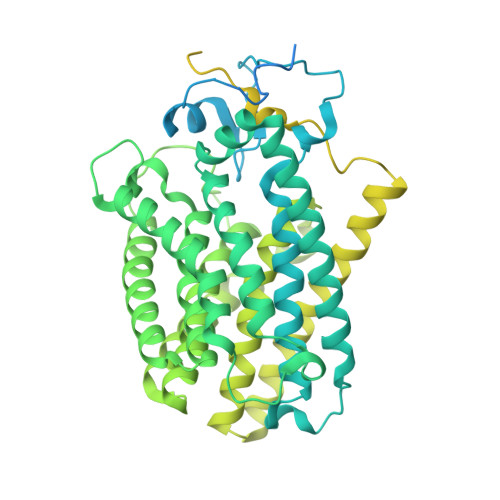Cryo-EM structures of the plant anion channel SLAC1 from Arabidopsis thaliana suggest a combined activation model.
Lee, Y., Jeong, H.S., Jung, S., Hwang, J., Le, C.T.H., Jun, S.H., Du, E.J., Kang, K., Kim, B.G., Lim, H.H., Lee, S.(2023) Nat Commun 14: 7345-7345
- PubMed: 37963863
- DOI: https://doi.org/10.1038/s41467-023-43193-3
- Primary Citation of Related Structures:
8GW6, 8GW7, 8J0J, 8J1E - PubMed Abstract:
The anion channel SLAC1 functions as a crucial effector in the ABA signaling, leading to stomata closure. SLAC1 is activated by phosphorylation in its intracellular domains. Both a binding-activation model and an inhibition-release model for activation have been proposed based on only the closed structures of SLAC1, rendering the structure-based activation mechanism controversial. Here we report cryo-EM structures of Arabidopsis SLAC1 WT and its phosphomimetic mutants in open and closed states. Comparison of the open structure with the closed ones reveals the structural basis for opening of the conductance pore. Multiple phosphorylation of an intracellular domain (ICD) causes dissociation of ICD from the transmembrane domain. A conserved, positively-charged sequence motif in the intracellular loop 2 (ICL2) seems to be capable of sensing of the negatively charged phosphorylated ICD. Interactions between ICL2 and ICD drive drastic conformational changes, thereby widening the pore. From our results we propose that SLAC1 operates by a mechanism combining the binding-activation and inhibition-release models.
Organizational Affiliation:
Department of Biological Sciences, Sungkyunkwan University, Suwon, 16419, Republic of Korea.
















